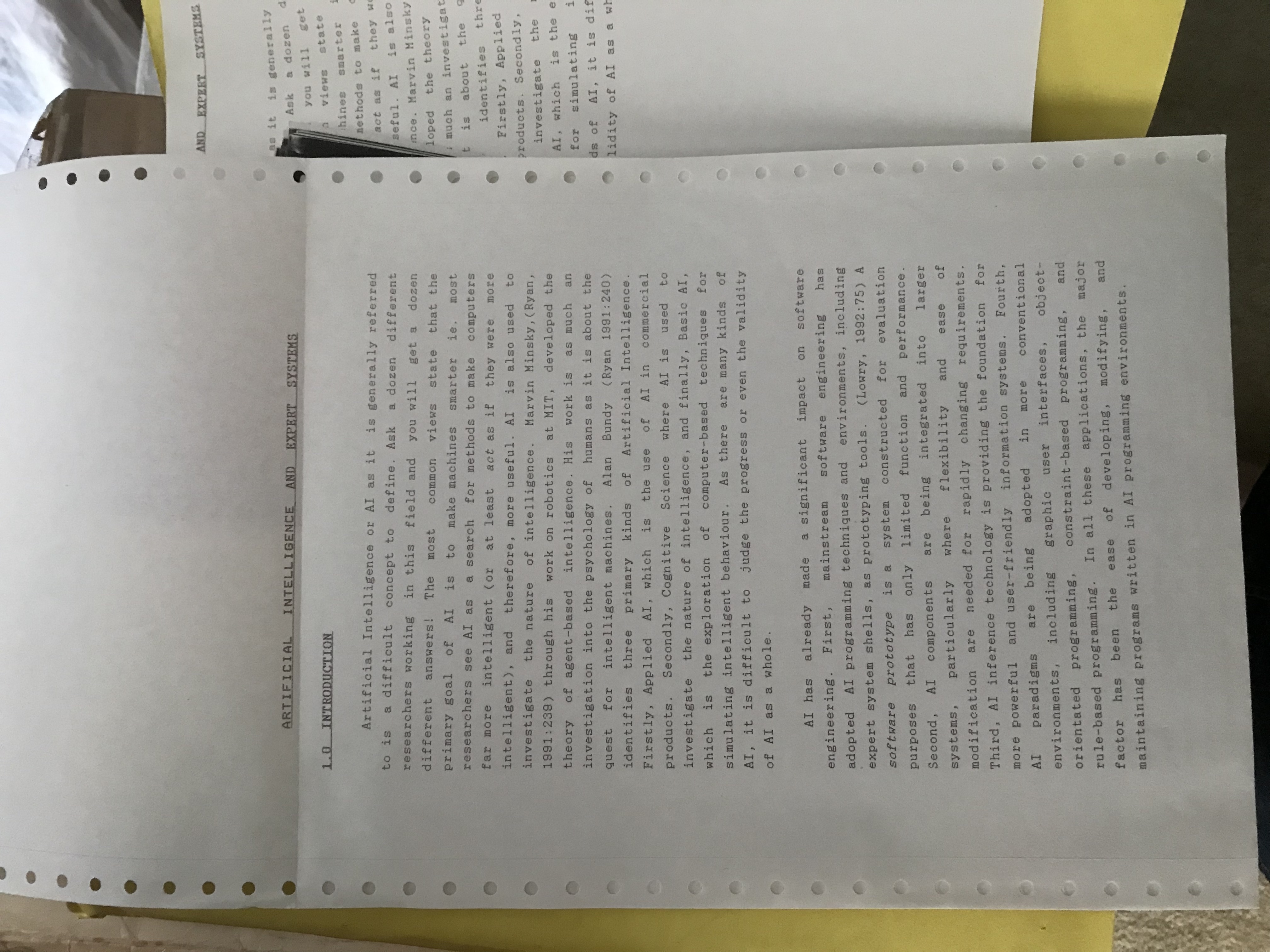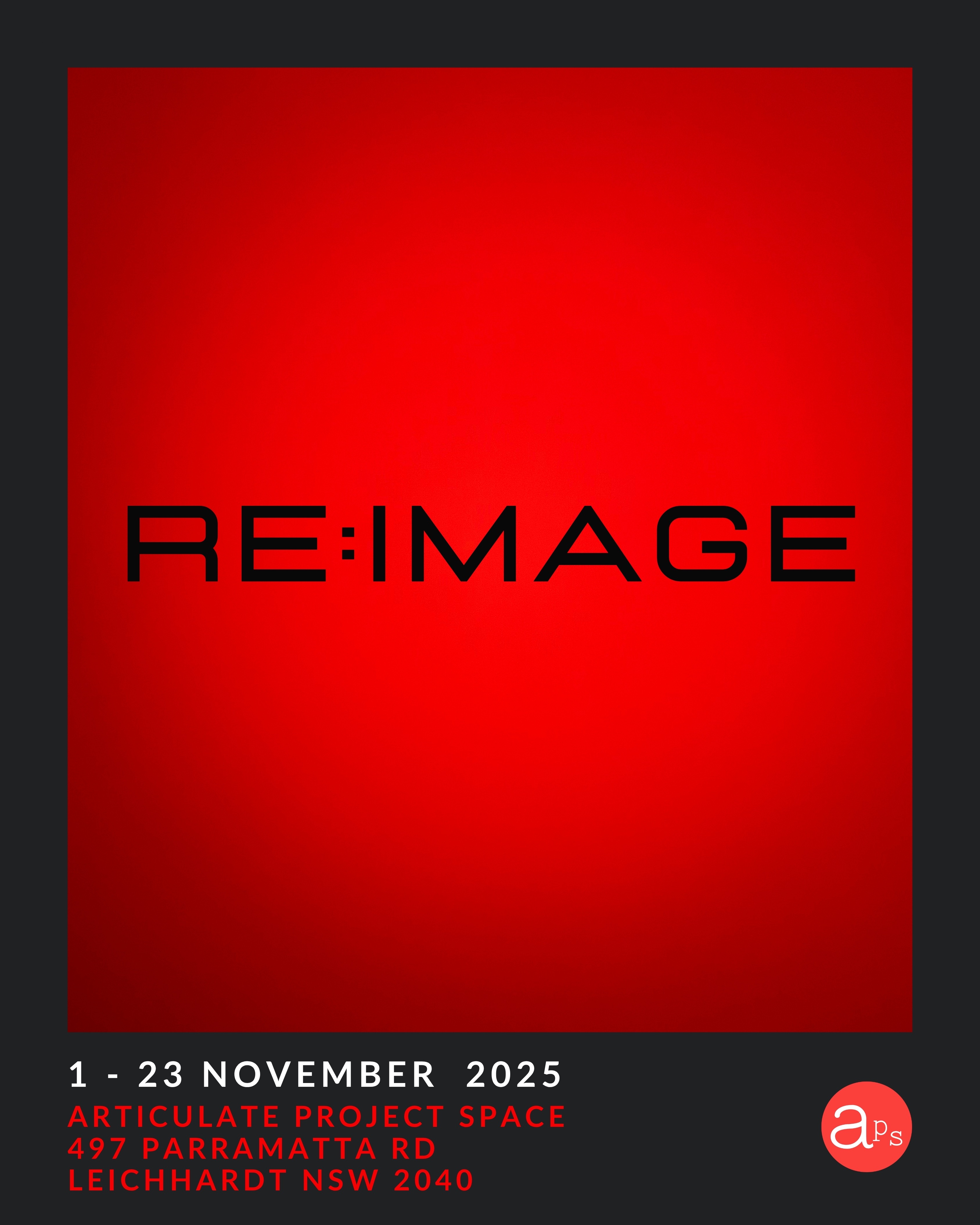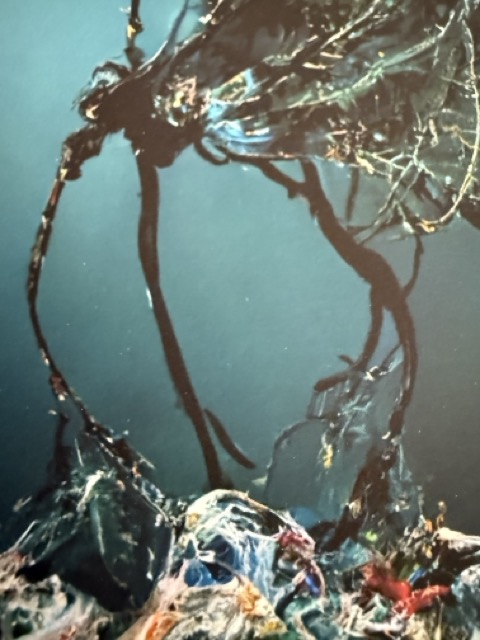Submitted by AliaK on Mon, 08/12/2025 - 15:02
I started studying “artificial intelligence” and “expert systems” back in early uni days, 1988-1991 during science?* / electrical engineering? / information technology* courses. I found an old uni article on AI / expert systems that I’d written, even mentions Marvin Minsky and his agent-based intelligence. Typed on dot matrix printer paper no less / early undergrad notes, be kind. As well as photocopies of articles from then whilst unpacking old storage boxes. This was before there was the “Internet” / “World Wide Web” that we have today, so research meant going to the uni library and searching journals, popular tech magazines, books, if they had any current enough that included new tech. At the time I was also working full-time, not in this field directly so abandoned it/moved in another direction. Have kept an eye on things over the years, but it’s nice/fun to catch up again now, to the new tech. Full circle so to speak. Have a few ideas for projects / art inquiries also, which I must actually start!
I’m planning to do two more machine learning classes via IATD — I’ve done some already on the more data science / data analysis type of machine learning. I really want to learn more about computer vision. IATD partner with some of the universities, Tafe and large corporates so we often are taught by PhD students/experts at a fraction of the price of uni, plus I like that they’re very hands on -> theory + coding. Coming up in Feb 2026 I’m taking the NLP class, then will take the deep learning class after this (having then finally met all the pre-requisites)


Submitted by AliaK on Thu, 13/11/2025 - 19:37
RE:IMAGE exhibition at Articulate Project Space
01-23 November 2025
artists:
Aidan Gageler, Alice Crawford, Andrew Simms, Angharad Evans, Annelies Jahn, John Prendergast, Julie Visible, Kath O'Donnell, Kathryn Bird, Kendal Heyes, Keorattana Luangrathrajasombat, Mark Facchin, Neil Jenkins, Pia Larsen, Samuel James, Steven Fasan, Sue Murray, Zorica Purlija
Curated by Anke Stäcker and Beata Geyer



:::
I'm gallery sitting this Friday 11am-2pm, 14 Nov if you'd like to pop in, otherwise visit the exhibition Friday-Sundays weekly until 23 Nov, 11am-5pm
Artist talks this Sunday, 16 November, 2-4pm
:::
Submitted by AliaK on Wed, 12/11/2025 - 19:59
the print arrived of one of my plastisphere creatures - imagined creatures evolved to live on the Great Pacific Garbage Patch. looks amazing even if I do say so myself! will have it in the invisibleart.space art-shed for the final weekend of the Southern Highlands Arts Trail
this #speculativeEvolution series is #AIart made in 2023 & 2024, printed in 2025. the video and cyanotype prints are on display also -> early photographs of future creatures
my other works on show are from my #specture series ::: hand-made / hand-coded web drawings in javascript (P5.JS), hand made #bioPlastic materiality tests, 3D printed extinct & speculative evolution species, 3D scanned - lidar & photogrammetry works, 3D modelling digital works brought into the physical world after beginning as hand drawn contour drawings, covering topics such as extinction, speculative evolution, lost interconnections from the species loss of ecosystem engineers / public housing providers of the environmental world
this video (11mins) is a run through / documentation of my works at the end of the arts trail. this is a mini-survey of some my ecology-based artworks since completing my Fine Art and Visual Culture degree up until now. I'm looking forward to what's coming next!
-- kath odonnell, November 2025
Southern Highlands Arts Trail 2025 ::: 1, 2, 8, 9 November 2025






Submitted by AliaK on Mon, 11/12/2023 - 22:39
During the past couple of months I've been working on co-curating & project managing a digital art exhibition for Teia art community/platform, which included five Teia artists curated by our team and fed into a physical exhibition, "Tezos x RefractionDAO", held at the Nautilus Hotel in Miami (Dec 6-8th 2023) as a side event during Miami Art Week. Miami Art Basel was held at this time, in different venues. The physical exhibition resulted in a global meme on twitter due to their exhibition design — long story ::: #tezpole.
We also produced post-exhibition artefacts for Teia which featured the full 38 artists and 11 artist-curators artworks: an electronic (PDF) catalogue and online / virtual gallery exhibition, "The Sun is Not the Only Bright Star".
It was an exercise in decentralized curation, working remotely with 11 curators (myself included) and 38 (predominantly digital) artists from around the world, covering multiple diversity and equity groups for the artists that sometimes don't get featured as much as they should.
Submitted by AliaK on Thu, 23/02/2023 - 22:55
::: via:
https://iview.abc.net.au/show/extinction-with-david-attenborough
Submitted by AliaK on Sun, 29/01/2023 - 20:45
was too humid to write today so I made some gelli prints, exploring different colour combinations and textures
cartridge drawing paper and acrylic paint


Submitted by AliaK on Thu, 29/12/2022 - 21:59
the Hay plains are vast, felt like hours crossing them. they continued as far as the eye could see. patches of water dispersed along the road. gave me an eerie feeling - being in the sublime - I kept thinking it was going to rain, flood and we'd be trapped there in the rising waters, even though this was unlikely

I became a bit obsessed with all the different grasses and mid journey-esque dead tree forms during the drive through outback NSW/VIC/SA. many photos to reference. someone needs to do a photo book on those trees. so beautiful. and the eucalypts with their fractal-like perfection
a colour map / species map of their distribution across the landscape would be cool too. patterns and mixtures abound

drowned trees and power poles in the Murray River

h/t to David Stephenson's "Drowned" / "Drowned Trees" series eg
Submitted by AliaK on Mon, 24/10/2022 - 21:13
specture ::: the topology and conceptual contexts underpinning my specture body of work ::: explorations of interconnectedness and 'evolution' of extinct species on/and the blockchain

::: speculative|species ::: future|architecture ::: https://butiq.art/aliak/specture
specture is a speculative exploration considering the interconnections and abstractions of extinct species (from NSW) on the blockchain, with the underlying idea: what if in the future this is the only place they exist?
The blockchain is an immutable technological system, where data stored on it remains forever (or for as long as the chain exists). I build conglomerations of generative, code-based systems mixed with 3D digital models to create digital drawings and animations as abstractions of the extinct species and their blockchain environment, to garner what the species might see and experience whilst inside the blockchain. These generative drawings imagine whether the species could evolve once in the blockchain, or would they reach their final form once stored there. They also reflect the decentralized entanglement in interconnectedness in both ecology and the blockchain.
Submitted by AliaK on Sun, 13/03/2022 - 17:19
specture ::: rewilding the blockchain mindmap as at 13 March 2022 (further updates yet to be added)
key artists / readings / links shown ::: others are listed separately in bibliography & project documents
green=explored (at some level)
black=to be explored
grey=excluded from current exploration (possible future)

Submitted by AliaK on Fri, 19/11/2021 - 16:41
it feels like we're grieving, for the loss of a website/system, though it was more than just a website; it was an idea and some say, a movement. hic et nunc [now a broken link], designed and built by Brazilian developer, Rafael Lima, was|is a generic architecture|system|platform for exploring decentralised blockchain uses that morphed into an art focused obkjt|NFT collection space|lab|dApp on the more eco-friendly Proof of Stake based Tezos blockchain. it came with a warning — This is an experimental dApp, use it at your own risk. Lima's design is an elegant architecture that works on multi levels — the objkt (NFT/art work) level, the platform (single site/front-end) level and the network|multisite|eco system level. hic et nunc brought beauty into the tech; art into the tech; the aesthetic into the tech; art and elegance into the architecture. it felt more feminine than many of the tech-bro developed platforms that surround it in the crypto landscape. the UI design was|is simple and clean, focusing on the art, as a flat plane, that allows the eye to flow across and above and below the page|space viewing art within the webpage frame. there were no popup menus invading|colonising your space|view|frame. everything was within — a plane of immanence (Davis 2021; RainDropUp 2008; Wikipedia 2021), with simple, flat navigation, subtley showing via collections and presentation, that everything is connected to something (Haraway 2016a; Haraway 2016b; Rose 2008; van Dooren 2014*), one art work led to the next, one artist connected to another, links between them all, point to point, peer to peer. there were no leaderboards, no transcendency, everyone and every piece of art was equalised by the immanent design — by the OBJKT and the SUBJKT (RainDropUp 2008).
a wash of emotions this past week, after hearing the news that Rafael had discontinued hicetnunc.xyz on November 11, 2021 (Nov 12 in Australia/Sydney). many articles have been posted about this (plus a few posts for context):
Submitted by AliaK on Fri, 05/11/2021 - 16:13
for my uni art project, I wanted to try some bio textiles processes using sustainable materials given the large amounts of waste and energy used in textiles and materials production. A classmate recommended I try alginate, a seaweed extract often used by dentists for their moulds. I found some recipes for bio-string / bio-plastic / bio-fabricating processes, and also discovered a collection of makers called FabLabs. my project is not strictly a textiles project, but is based on / inspired by string figures, so I was happy to find that this method can be used to create bio-string too. The main ingredients (sodium alginate and calcium chloride) were found at The Red Spon Company, a baking and food supply store in Rosebery, Sydney. They didn't have glicerine, and I check a couple of other stores and couldn't find it also, so didn't include that - one recipe included it and another didn't so I thought it might be optional.
Recipe reference ::: see Links below for general research / other links
Bogers, Loes. 2020. "Alginate String." Textile Academy. https://class.textile-academy.org/2020/loes.bogers/files/recipes/alginat....

Submitted by AliaK on Mon, 04/01/2021 - 23:06
::: via:
https://news.artnet.com/the-art-angle/art-angle-podcast-peter-schjeldahl-re-run-1934221
Submitted by AliaK on Sat, 02/01/2021 - 23:49
there was a mention of pataphysics in one of the mu-mesons' videos we've been watching over the holidays. reminded me of Sam Renseiw's spacetwo videoblog. nice to see he's still making them: "the fine art of 'pataphysics in daily life. condensed poetic voodles. A video blog by sam renseiw"
'Pataphysics, an absurdist concept coined by the French writer Alfred Jarry, is a philosophy dedicated to studying what lies beyond the realm of metaphysics. Defined as: "The science of imaginary solutions, which symbolically attributes the properties of objects, described by their virtuality, to their lineaments"
https://patalab02.blogspot.com
::: via:
https://patalab02.blogspot.com
Submitted by AliaK on Thu, 31/12/2020 - 01:09
an index of artist research submitted in assignments for OUA / Curtin University's Bachelor of Arts - Fine Arts and Visual Culture
VSW100 - assignment1 - Sept 2015
Zimoun
El Anatsui
VSW100 - assignment2 - Oct 2015
ReefKnot
Janet Echelman
Ken Unsworth
Sack and Reicher + Muller, Eyal Zur
Sol LeWitt
Zaha Hadid
Lucien den Arend
Anish Kapoor
VSW100 - assignment3 - Nov 2015
Detournement
Robert Montgomery
Giuseppe Pinot-Gallizio
Asger Jorn
Kara Walker
Vaporwave “Aesthetic” Art
Detourned Collage on Instagram
Culture Jamming
Richard Hamilton
Tabitha Moses
Tracey Emin
Louise Bourgeois
Mattias Adolphson
William Kentridge
Syd Mead
Holly Herndon
Robert Breer
Thet Paing Kha
David Shrigley
Fiona McMonagle
Jake Fried
Len Lye
Richard Lewer
Submitted by AliaK on Wed, 08/06/2016 - 13:34
Pages